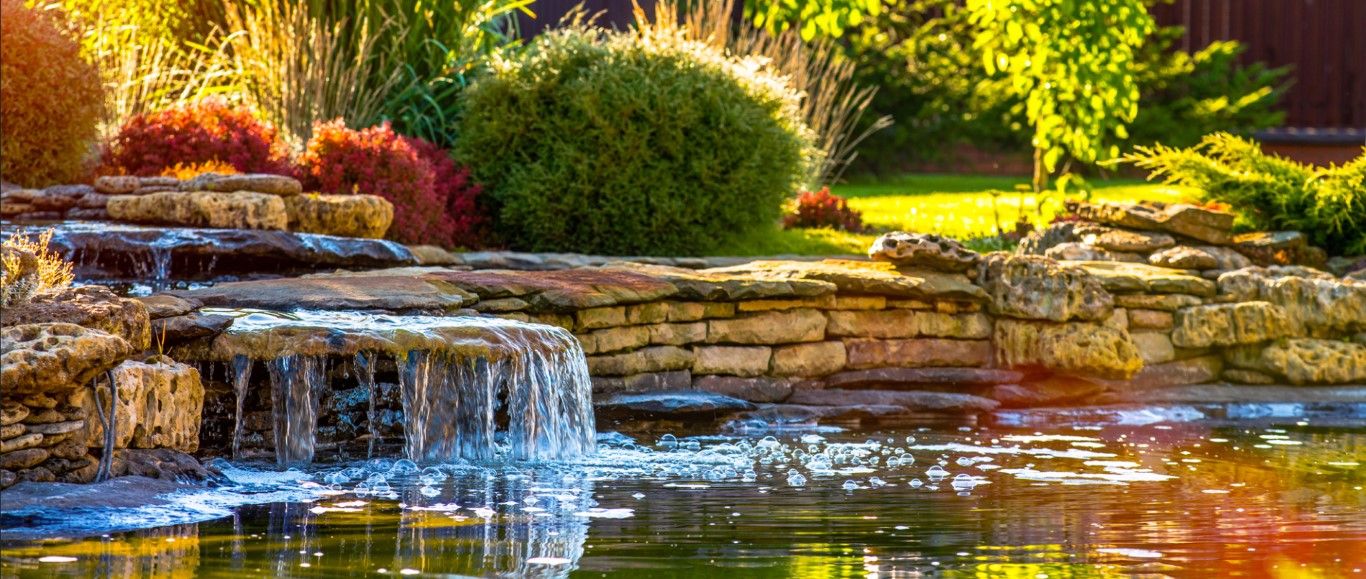How to: Winterise Your Pond or Water Feature
How to: Winterise Your Pond or Water Feature
As winter approaches, it's important to prepare your pond or water feature and ensure it remains healthy and attractive throughout the cooler months. Here are some detailed steps and practical tips to help you maintain your water installations effectively. After you’ve winterised your water garden, there isn't much more work needed, however, there are a few things you will want to keep an eye on over those winter months.
Getting your pond ready for winter:
1. Clean and Clear Debris:
Decaying organic material, such as leaves and twigs, can lead to oxygen depletion and the release of harmful gases, which are detrimental to water quality and aquatic life.
- Action: Use a fine pond/fish net to skim and remove floating debris. You can also slowly drag the net along any pond shelves and across the floor of the pond to remove as much thick debris and sludge as possible.
- Action: Installing mesh pond netting in early autumn can prevent leaves from entering the water, reducing overall maintenance efforts. Simply roll up the net, discard the caught leaves, and put the net away until it’s needed again.
- Tip: If excessive leaves and debris have settled at the bottom of your pond, a pond vacuum could be the most ideal way to remove it.
2. Care for Aquatic Plants:
Many aquatic plants enter a dormant phase during cooler months and require different care to survive and thrive.
- Action: Trim and prune back any overgrown or dying plants to prevent decay in the water.
- Action (Hardy): Cut back hardy marginal plants and leave them in the pond. Trim hardy water lilies to approximately five centimetres above the crown. Hardy plants, including water lilies, can be submerged to the deepest part of the pond - preferably 60cm or deeper - where the water remains at a more consistent and warm temperature, though this may not be necessary if your region does not get frosty over winter.
- Action (Tropical): You can move tropical plants indoors or cover them with canvas, plastic or fibreglass during heavy frosts, although most tropical plants are able to survive the milder climates of New Zealand winters with little intervention. Tropical water lilies, which go dormant during winter anyway, can be left alone in your pond or added to your compost pile.
- Tip: Grass-type pond plants don’t need to be cut back at all and will provide an aesthetic interest to the pond during winter months.
Maintaining your pond over Winter:
3. Manage Algae Growth:
Algae growth can continue through winter, though at a reduced rate, still affecting water clarity and health.
- Action: Fish metabolism slows down when the temperature drops; reduce the amount of feeding and/or switch to a low protein food, and only feed when the fish come to the surface for food.
- Action: Use a UV clarifier or algaecide recommended for winter use, ensuring it's safe for all pond inhabitants. At Stone & Water World, all of our filters have UV filtration.
- Action: Keep your pump running to promote oxygen exchange in the water. Stone & Water World’s submersible pond pumps provide excellent water oxygenation and can withstand New Zealand’s winter temperatures. Adequate aeration helps prevent stagnation, reduce algae growth, and ensure a healthy environment for fish and plants.
4. Check and Adjust Water Levels:
Evaporation can significantly lower water levels, affecting the operation of pumps and filters, which are crucial for maintaining water quality.
- Action: Monitor water levels weekly and add rainwater or treated tap water when necessary to maintain optimal levels. Ensure the water being added is similar in temperature to avoid shocking the aquatic ecosystem.
- Tip: Stone & Water World has a Tap Water Conditioner that instantly dechlorinates and detoxifies aquarium and pond water, ensuring your pond water remains safe for its inhabitants.
5. Maintain Equipment:
Pumps, filters, and lights must be maintained to ensure they continue to function efficiently through the winter.
- Action: Clean filters and pumps thoroughly to remove any debris that might clog them. Check all electrical connections for safety.
- Action: If your pond is shallow and typically experiences frigid temperatures (i.e., if your pond is likely to freeze over), consider removing the pump and storing it indoors to prevent wear.
Properly winterising your pond or water feature can significantly impact its resilience and beauty, preparing it for a robust return in spring. Following these steps will help maintain a healthy aquatic environment, preventing common winter issues and ensuring that your water feature remains a vibrant focal point of your garden even in winter.
If you enjoyed this guide, you may also enjoy:


